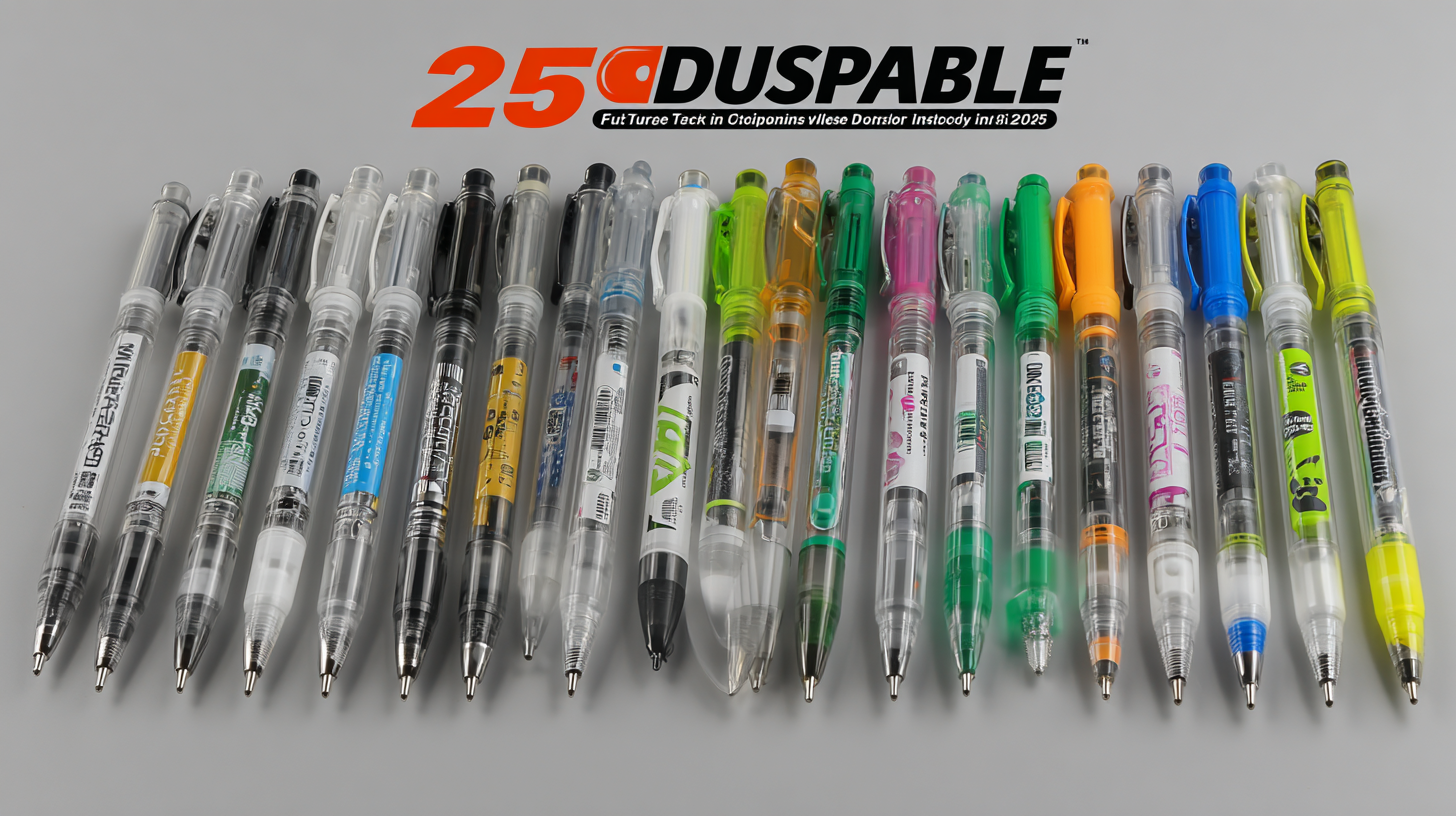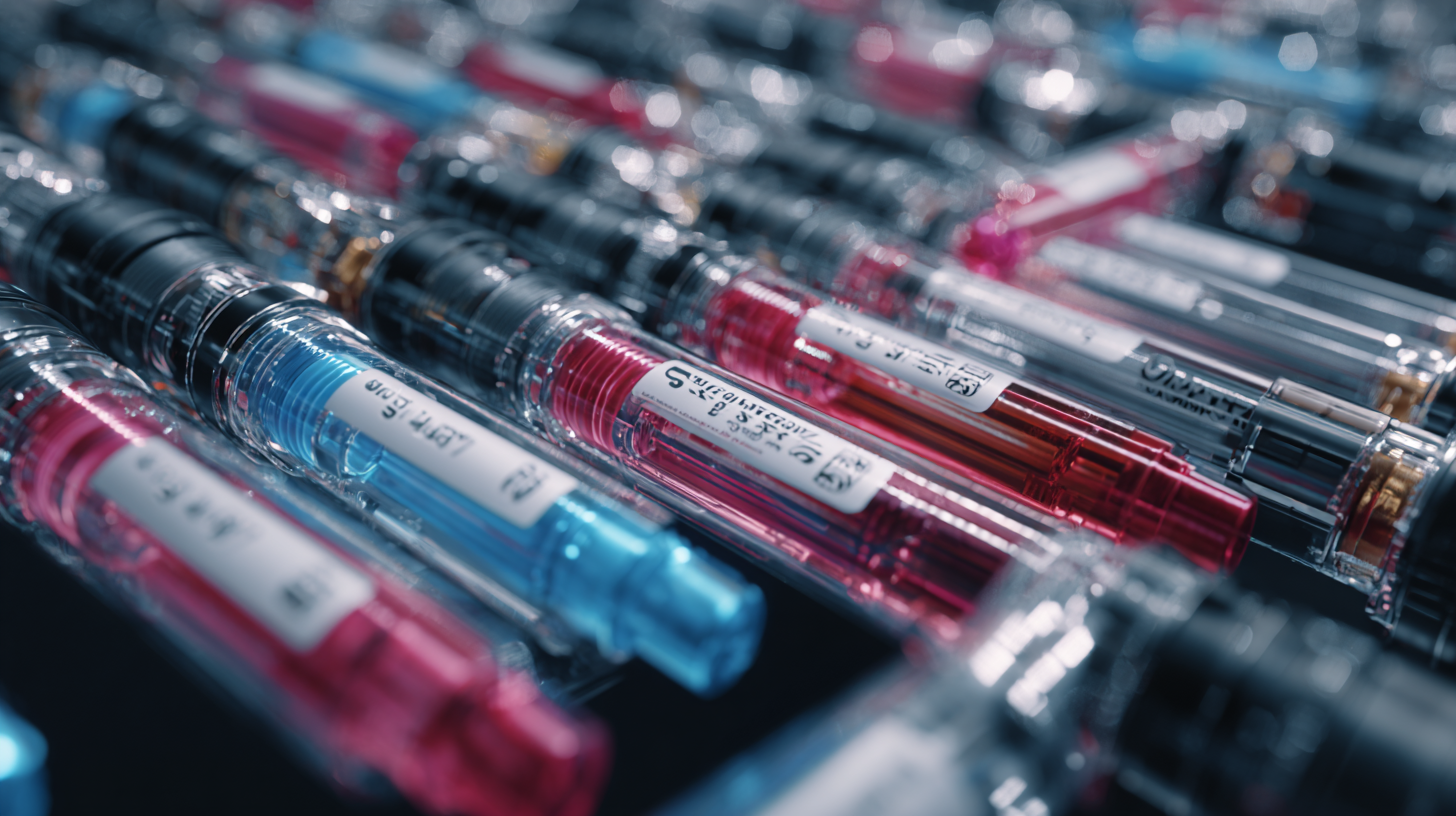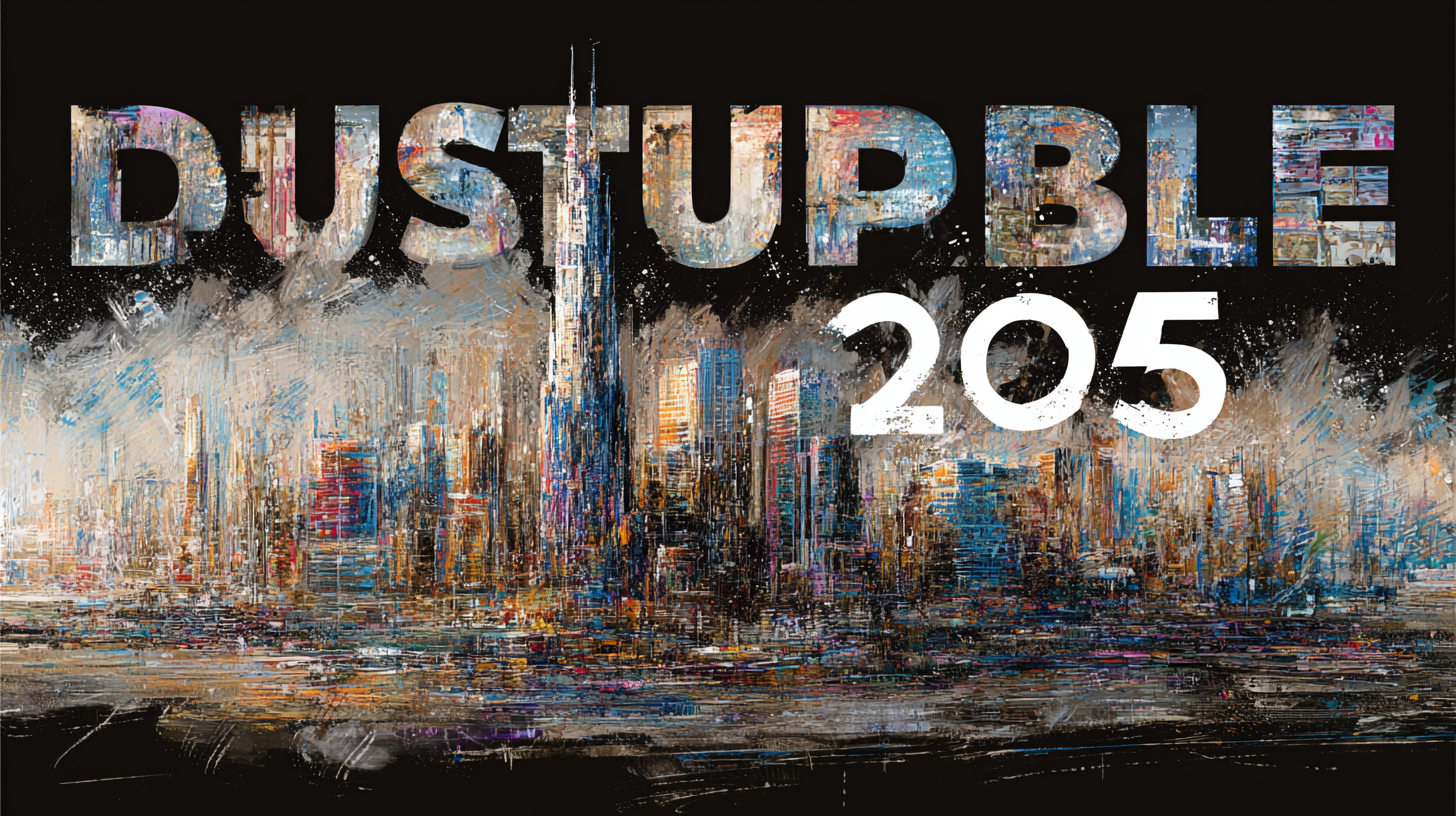Future Proofing Your Supply Chain with the Best Disposable Pen Innovations for 2025
As we look ahead to 2025, the evolution of the disposable pen market stands to reshape the way we think about supply chains in various industries. According to recent data from market research firm Smithers Pira, the global disposable pen market is projected to reach $1.5 billion by 2025, driven by rising demand for convenient and hygienic writing instruments in educational and corporate settings. With innovations such as eco-friendly materials and smart technology integrations, today's disposable pens are not just tools but part of a more sustainable and efficient supply chain. Companies must prepare for these advancements to meet consumer expectations and maintain competitive advantages. Understanding the latest trends in disposable pen innovations is essential for stakeholders looking to future-proof their supply chains and optimize their operational efficiency in an increasingly dynamic marketplace.

Innovative Materials: The Key to Sustainable Disposable Pens by 2025
The landscape of disposable pens is undergoing a significant transformation as we approach 2025, driven by the urgent need for sustainability. Innovative materials are at the forefront of this change, providing a pathway to reduce the environmental impact of everyday writing instruments. Biodegradable plastics and plant-based alternatives are being developed to replace conventional petroleum-based materials, ensuring that these items will decompose more efficiently in landfills, thus minimizing pollution.
Furthermore, the integration of recycled materials into the production of disposable pens not only helps in conserving resources but also supports a circular economy. Companies are exploring the use of recycled paper, plastics, and metals to create functional yet eco-friendly products. These advancements not only enhance the sustainability of disposable pens but also appeal to environmentally conscious consumers who prioritize products that align with their values. As we move closer to 2025, embracing these innovative materials will be crucial for brands aiming to future-proof their supply chains and meet the growing demand for sustainable office supplies.
Future Proofing Your Supply Chain with the Best Disposable Pen Innovations for 2025
This chart illustrates the projected adoption rates of various innovative materials in the disposable pen industry by 2025. As sustainability becomes a priority, biodegradable materials are expected to lead the market, followed by recycled plastics and plant-based inks.
The Impact of Automation on Supply Chain Efficiency in Disposable Pen Manufacturing
As the disposable pen manufacturing sector evolves, automation is becoming a crucial element in enhancing supply chain efficiency. According to a report by McKinsey, companies that adopt automation can boost their productivity by up to 30%. This paradigm shift is transforming traditional workflows, enabling manufacturers to streamline operations and reduce labor costs. With automated systems managing everything from inventory control to assembly lines, businesses can respond more swiftly to market demands, ensuring that they remain competitive in an ever-changing landscape.
The integration of robotics and artificial intelligence into the production process not only minimizes human error but also maximizes output. A recent study by Deloitte estimates that the adoption of AI in manufacturing could lead to a productivity increase of 40% within the next decade. With these advancements, disposable pen manufacturers can achieve greater precision, reduce material waste, and ultimately enhance product quality. As we look toward 2025, the implementation of automation in supply chains will be essential in meeting consumer expectations for faster and more reliable products, thereby establishing a robust foothold in the market.
Consumer Trends: The Shift Towards Eco-Friendly Disposable Pen Options by 2025
As we look ahead to 2025, the landscape of consumer preferences is evolving, with a noticeable shift towards eco-friendly disposable pen options. Today’s consumers are more environmentally conscious than ever, seeking products that not only meet their functional needs but also align with their values. This growing awareness is prompting brands to innovate and offer disposable pens made from sustainable materials, which help to reduce plastic waste while maintaining quality and performance.
The demand for eco-friendly disposable pens is driven by several factors, including increased environmental awareness and governmental policies promoting sustainability. Brands that prioritize environmentally friendly practices are not only attracting a loyal customer base but also contributing positively to the planet. Innovations in biodegradable and recyclable materials are becoming more prevalent in the pen manufacturing industry, allowing producers to meet the eco-conscious desires of consumers without sacrificing convenience. As we transition into this new market era, the emphasis will be on developing disposable pen options that are both stylish and sustainable, ensuring that 2025 is a year of significant advancement in environmental responsibility.
Data-Driven Insights: Enhancing Supply Chain Resilience Through Technology in the Pen Industry
In an increasingly competitive market, supply chain resilience has become essential for the pen industry, particularly as we approach 2025. Data-driven insights are now transforming how businesses navigate disruptions and achieve operational efficiency. According to a recent McKinsey report, 80% of organizations have started to implement advanced analytics to enhance visibility across their supply chains. This shift is crucial for the disposable pen sector, where rapid responses to consumer trends and market fluctuations can dictate success.
Technology plays a pivotal role in bolstering supply chain resilience. By integrating IoT sensors and AI-driven analytics, manufacturers can monitor inventory levels in real-time, reducing stockouts and ensuring timely delivery. A survey by Gartner indicates that companies leveraging such technologies can improve their forecast accuracy by up to 50%. As we look ahead to 2025, it’s clear that embracing these innovations will not only streamline operations but also equip businesses to better withstand economic uncertainties, ultimately leading to sustainable growth and customer satisfaction in the disposable pen market.

Regulatory Changes: Preparing for Compliance in the Disposable Pen Market Moving Forward
The rapid evolution of the disposable pen market necessitates a keen focus on regulatory changes to ensure compliance and consumer safety. As the industry faces heightened scrutiny, businesses must adapt proactively to new standards. Recent reports highlight the challenges posed by a significant uptick in e-cigarette sales, underscoring the urgency for regulators to enforce stricter controls. Companies need to be vigilant, as trends show that despite new laws, some retailers are still openly selling banned products. This flouting of regulations poses a risk not only to public health but also to the integrity of the market.
Preparing for compliance in the disposable pen sector involves more than just adhering to current regulations; it requires anticipating future changes. As exemplified by recalls in the cannabis sector over pesticide concerns, the repercussions of negligence can be severe. Companies that embrace innovative practices while aligning with regulatory frameworks will stand out in 2025 and beyond. Establishing robust internal compliance measures and fostering a culture of transparency will be key in navigating these complexities and ensuring long-term sustainability within the industry.
